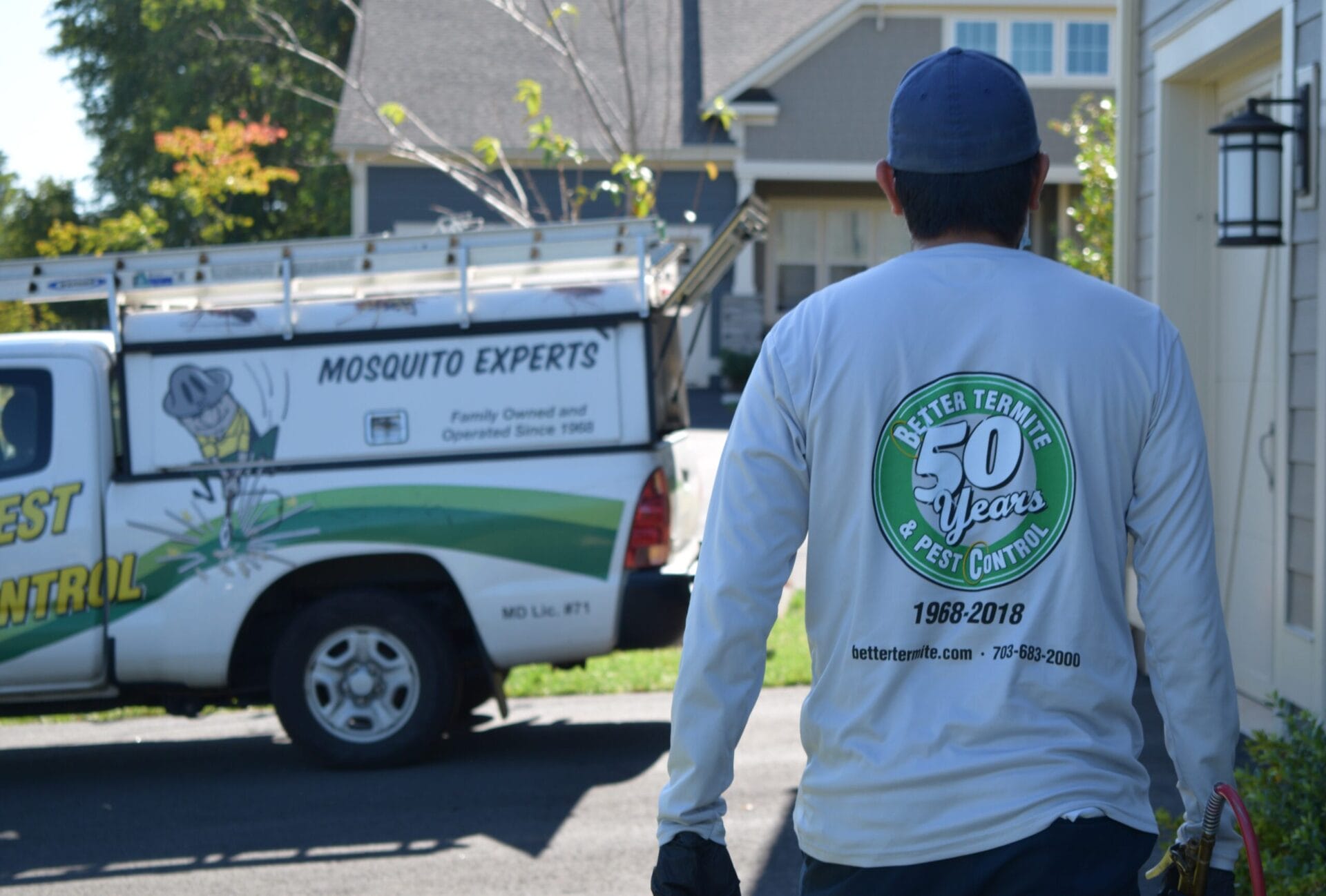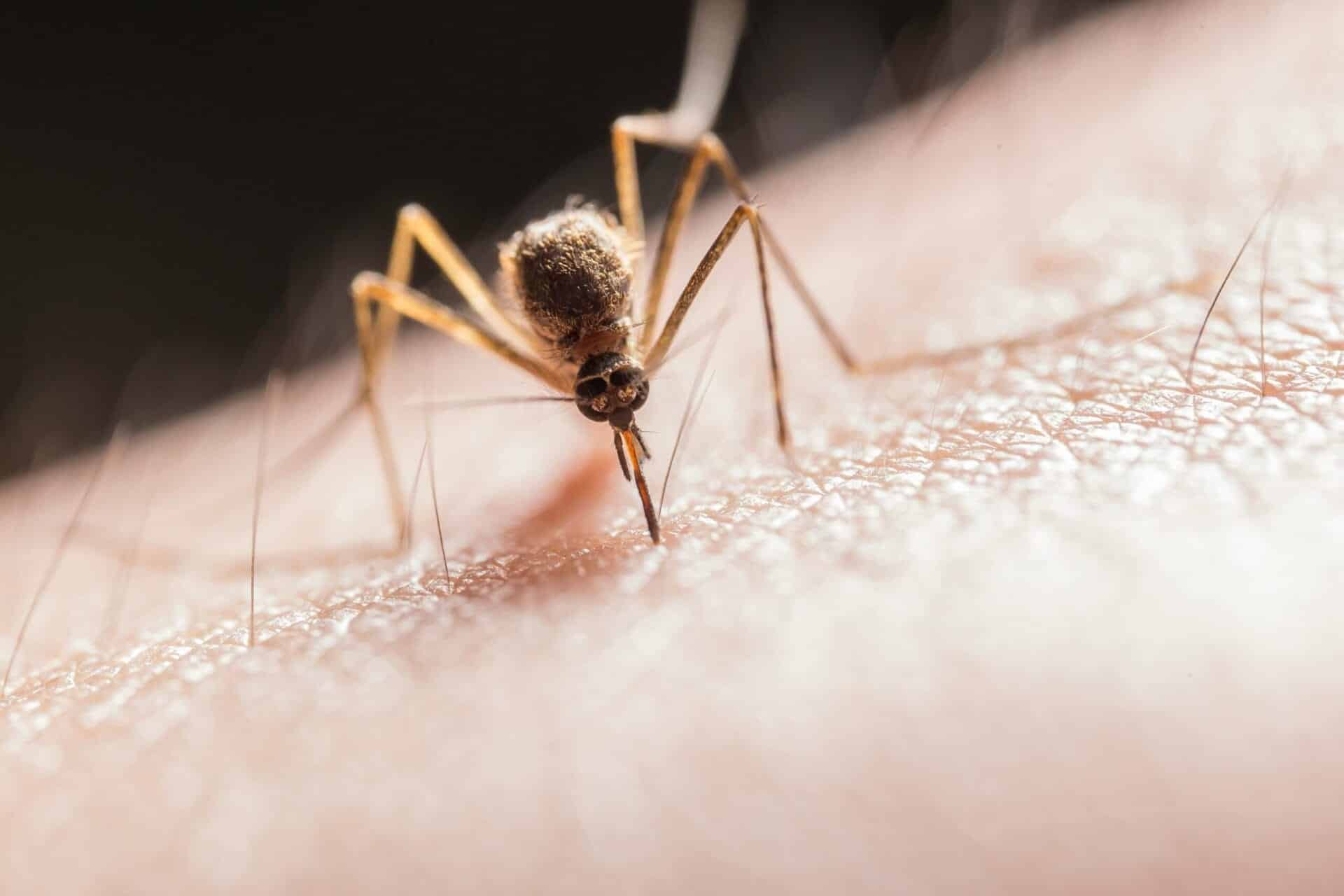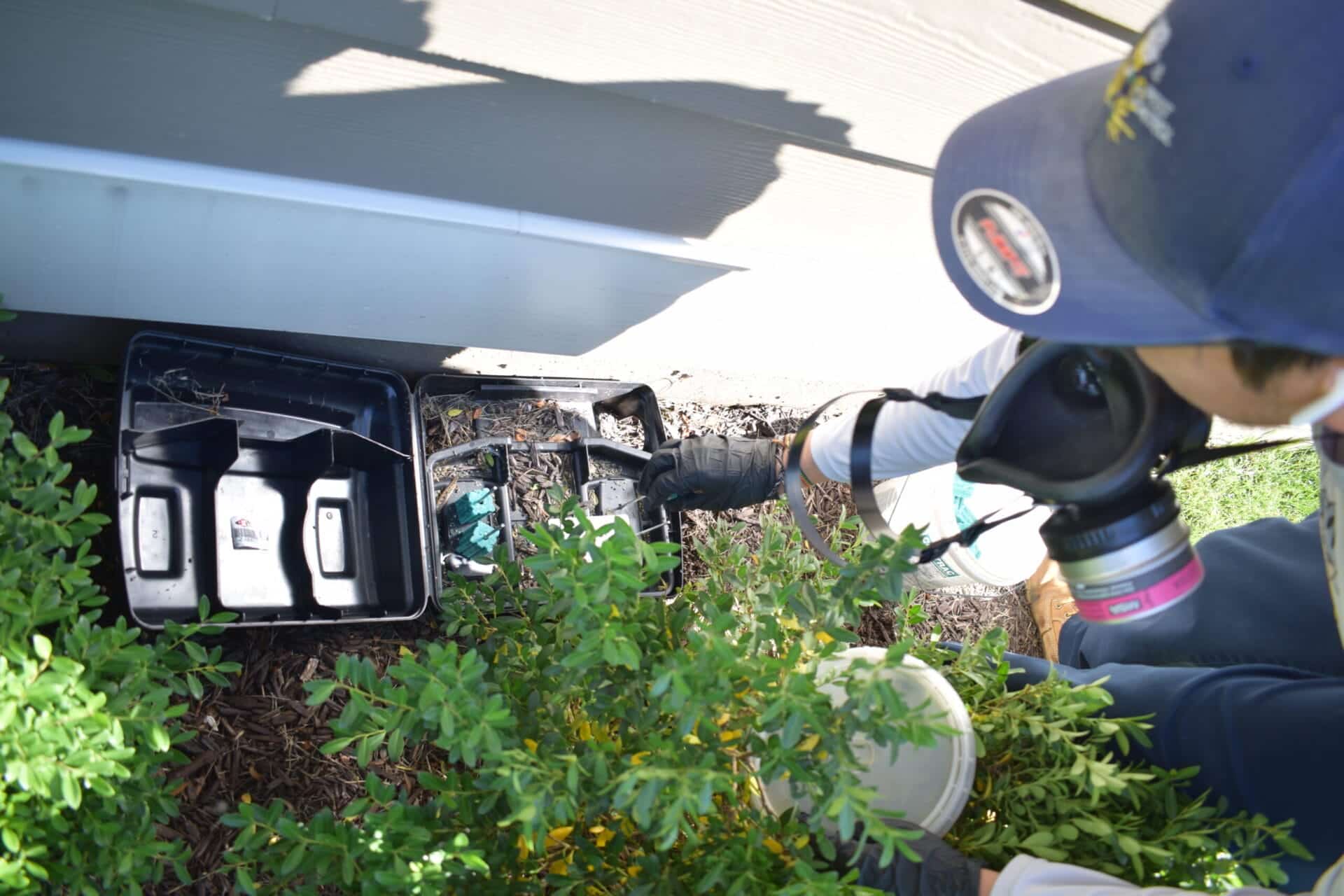


Quick Navigation
When you hear that familiar buzzing sound in your Virginia or Maryland backyard, you might wonder: cicada vs locust – which one is creating all that noise? As a registered technician with our family business that’s been serving the DMV area for over 50 years, I’ve helped countless homeowners understand these differences.
The confusion between cicadas and locusts runs deep in our region. Early European settlers actually mistook massive periodical cicada emergences for Old World migratory locusts, which is why some people still call them “17-year locusts.” But these are completely different insects with very different behaviors and impacts on your property.
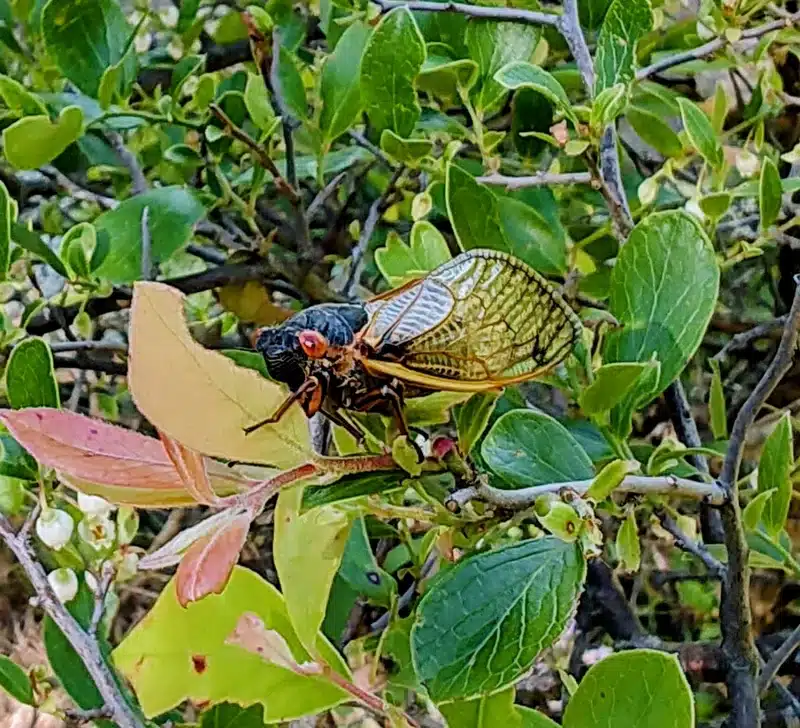
The most important thing to understand about cicada vs locust identification is that they belong to completely different insect orders. Cicadas are part of the order Hemiptera, while locusts belong to Orthoptera – essentially, they’re as different as butterflies and beetles.
In our Virginia and Maryland service area, when people talk about “locusts,” they’re usually referring to grasshoppers like the differential grasshopper or two-striped grasshopper. True swarming locusts are rare in the eastern United States, though we do occasionally see larger grasshopper populations during certain weather conditions.
🔍 Quick ID Tip: Look at the eyes first! Periodical cicadas have unmistakable bright red eyes, while grasshoppers have brown or green compound eyes. This is the fastest way to tell them apart at a glance.
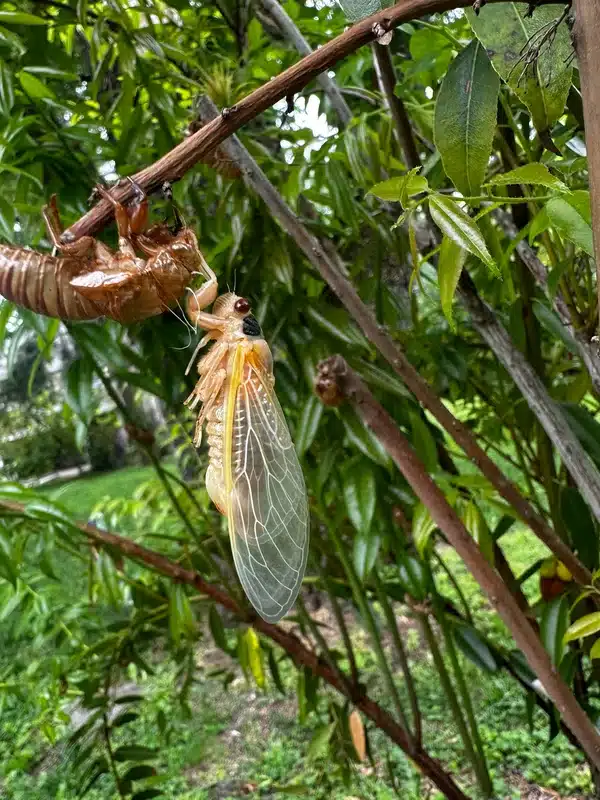
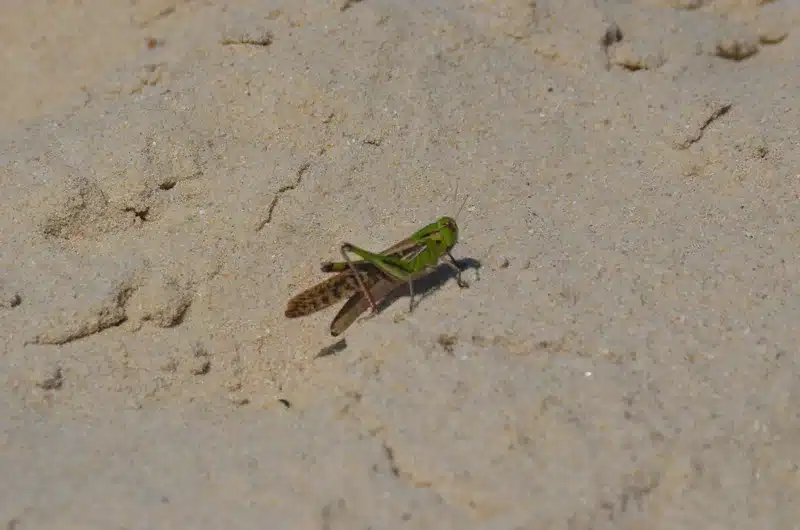
When comparing cicada vs locust appearance, several features make identification straightforward. Cicadas have stocky, robust bodies that measure about ¾ to 1½ inches long. Their most striking feature is those bright red eyes that seem to glow, especially on periodical cicadas.
Locusts (grasshoppers) have more slender, elongated bodies and can range from 1-2 inches in length. Their compound eyes are typically brown or green, never the distinctive red you see on periodical cicadas.
The wings tell a clear story in cicada vs locust identification. Cicadas have two pairs of clear, glassy wings with prominent orange veins. They hold these wings in a tent-like position over their bodies when resting.
Grasshoppers have leathery forewings that protect their delicate hind wings when folded. During my years in the field, I’ve noticed that grasshopper wings often have more muted colors and patterns compared to the striking transparency of cicada wings.

One of the most obvious differences in cicada vs locust behavior relates to their legs. Grasshoppers have dramatically enlarged hind legs with powerful femur muscles designed for jumping. Watch one for a few seconds and you’ll likely see it leap several feet away.
Cicadas have relatively normal-sized legs and are actually quite clumsy movers. They’re slow fliers and definitely not jumpers. This makes sense when you consider they spend most of their lives underground.
Understanding cicada vs locust life cycles explains why you see them at different times and frequencies. In our region, we have two main types of cicadas:
The periodical broods are the ones that make headlines. According to Virginia Tech Extension, our area hosts several important broods including Brood X (17-year cycle, last emerged in 2021), Brood XIV (due in southwestern Virginia in 2025), and Brood XIX (13-year cycle, emerged in southern Virginia in 2024).
Grasshoppers follow a much simpler annual pattern. They typically have one generation per year in Virginia and Maryland. Eggs are laid in late summer in bare soil, survive winter, then hatch in late May or June.
The timing creates interesting overlap in cicada vs locust activity during certain years, especially when periodical cicadas emerge during peak grasshopper season.
The sounds are probably the most noticeable aspect of cicada vs locust encounters in your yard. Cicadas produce their calls using specialized organs called tymbals – paired structures in their abdomen that flex rapidly to create sound.
During major emergences, cicada choruses can reach extremely high volumes that may pose hearing risks during peak activity.
According to CDC research, Brood X choruses can reach 90-100 decibels at just 3 feet away during peak activity. This volume is comparable to a lawn mower or motorcycle.
The CDC’s National Institute for Occupational Safety and Health notes that prolonged exposure to sounds above 85 decibels can cause hearing damage. During major emergence years, consider limiting time spent near large cicada aggregations or using hearing protection for extended outdoor work.
Grasshoppers create sound through stridulation – rubbing their hind leg against their forewing like a violin bow across strings. Some species also produce crepitation sounds by snapping their wings during flight.
Generally, grasshopper sounds are much quieter than cicada choruses, typically ranging from 50-70 decibels. You’ll often hear them chirping at dawn and dusk rather than the midday concerts that cicadas prefer.
Here’s where cicada vs locust damage potential differs dramatically. Adult cicadas have piercing-sucking mouthparts designed to tap into tree xylem (basically tree sap). They cause virtually no feeding damage to your plants.
The main concern with cicadas is oviposition damage – females cut slits in pencil-thin twigs to lay eggs. This creates “flagging” where twig tips die back. Young trees, especially newly planted ones, face the highest risk.
Grasshoppers are the real plant destroyers in cicada vs locust comparisons. Both young and adult grasshoppers have chewing mouthparts and will defoliate vegetables, soybeans, sweet corn, and other crops.
During outbreak years – which often follow warm, dry springs – grasshopper populations can strip gardens bare in just days. I’ve seen homeowners lose entire vegetable gardens to severe grasshopper pressure, especially around field edges.
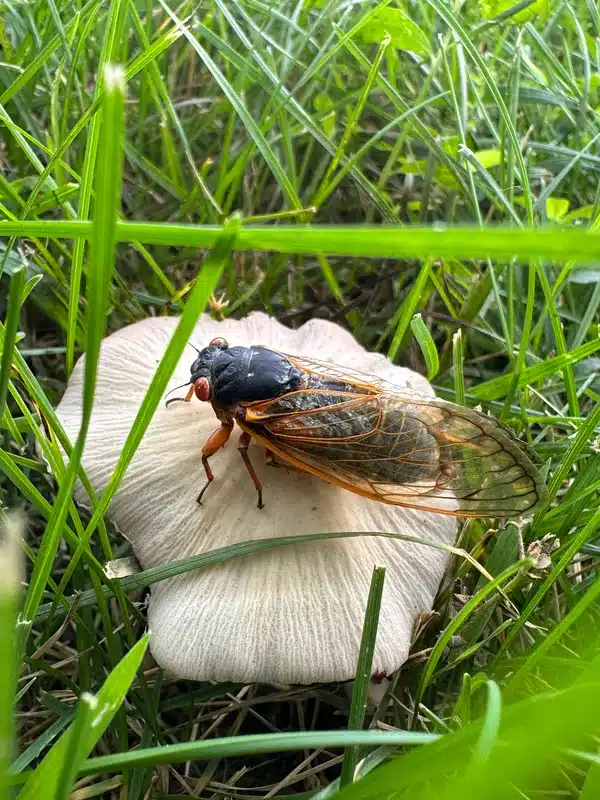
Cicada vs locust management requires completely different approaches. For cicadas, the key is protection during emergence years rather than elimination.
Our most effective strategy involves covering young trees with ¼ to ⅜-inch mesh netting from first emergence until late June. We secure the netting around the trunk base to prevent cicadas from accessing vulnerable branches.
Chemical treatments generally aren’t recommended for cicadas because:
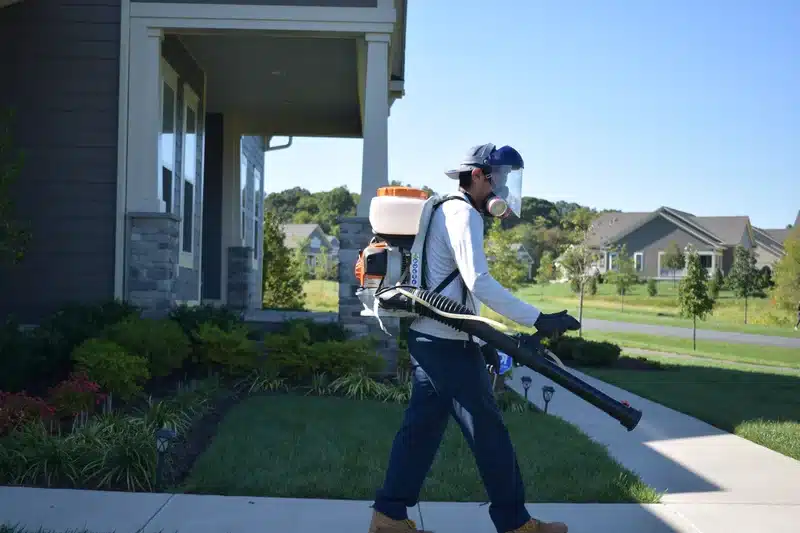
Grasshopper management in cicada vs locust scenarios requires more active intervention. We focus on cultural, biological, and targeted chemical controls.
Cultural controls include reducing tall weeds near gardens, tilling egg beds in fall, and using floating row covers on seedling beds. These methods align with our approach on other jumping insects – similar to what we discuss in our guide on cricket vs grasshopper differences.
Biological controls involve encouraging natural predators like birds, mantids, and spiders. We sometimes recommend Nosema locustae spores, an approved microbial bait that suppresses nymphs in smaller areas.
Chemical controls become necessary when populations exceed damage thresholds. We scout borders carefully and treat nymphs early before they develop full wings, often using barrier treatments rather than broadcast applications.
Understanding cicada vs locust timing helps homeowners prepare appropriately. University of Maryland Extension maintains detailed maps showing which counties will experience different brood emergences through 2038.
Brood X, which emerged in 2021, won’t return until 2038. However, other broods will emerge sooner in different parts of our region, so it’s not a simple 17-year gap everywhere.
Grasshopper outbreaks in cicada vs locust scenarios tend to correlate with specific weather patterns. Virginia Tech research shows that warm, dry springs create ideal conditions for grasshopper population booms.
Areas like Ashburn, South Riding, and Leesburg – with their mix of development and agricultural edges – often see higher grasshopper pressure during outbreak years. The rapid development in these areas disturbs natural pest balances, creating conditions similar to what we see with other insects covered in our Maryland spider guide.
Most cicada vs locust situations don’t require professional intervention, but certain circumstances warrant expert treatment. For cicadas, we typically get called when valuable young trees or vineyard installations face emergence years.
Grasshopper situations that require professional help include:
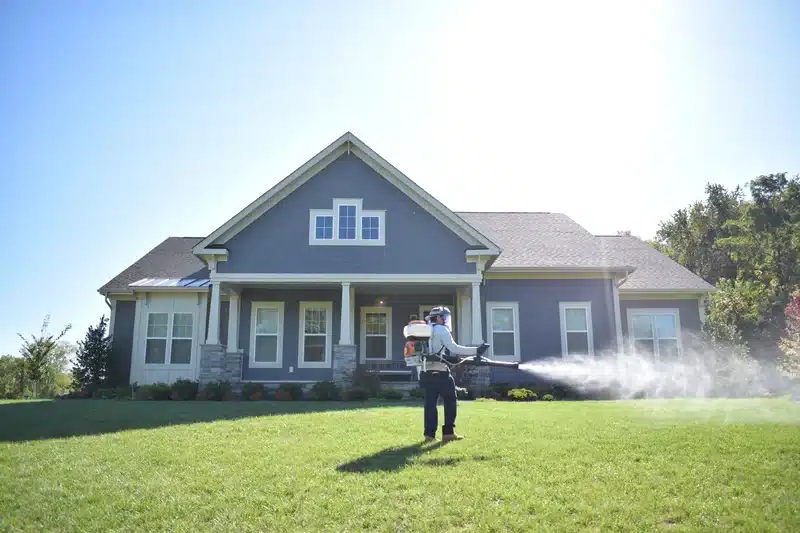
When we handle cicada vs locust management, our approach reflects over five decades of experience in the DMV area. For grasshopper control, we emphasize integrated pest management that combines multiple strategies.
Our treatments use products that have passed through our internal research team – the same materials we’d feel comfortable using around our own families. We’ve eliminated 9 of the industry’s harshest chemicals, choosing alternatives like those we use for other seasonal pest issues.
Additionally, our unlimited callback policy means if grasshopper pressure builds up between scheduled treatments, we’ll return at no extra cost. This approach is especially important during outbreak years when populations can explode rapidly.
Both insects play important ecological roles, though in very different ways. Cicada vs locust environmental impact shows interesting contrasts that affect how we approach management.
Cicada emergences provide massive nutrient pulses to forest ecosystems. Their carcasses enrich soil with nitrogen and phosphorus, actually boosting tree growth. They’re also an incredible protein source for birds, mammals, and even fish during emergence years.
Grasshoppers serve as important recyclers of plant biomass and prey for numerous predators. However, during outbreak years, they can significantly disrupt plant community composition and agricultural systems.
After decades in pest management, I’ve heard numerous myths about cicada vs locust identification and behavior. Let me clear up the most common ones:
“Cicadas eat your plants” – This is completely false. Any major leaf damage you’re seeing comes from grasshoppers or other chewing insects, not cicadas.
“Branches oozing sap are being attacked by cicadas” – The oozing comes from egg-laying slits, not feeding. Cicadas don’t cause sap flow through feeding.
“Locust outbreaks happen every 17 years” – This confuses periodical cicadas with grasshoppers. Grasshopper outbreaks depend on weather conditions, not predictable cycles.
Understanding these differences helps homeowners make better decisions about when and how to respond to insect activity around their properties.
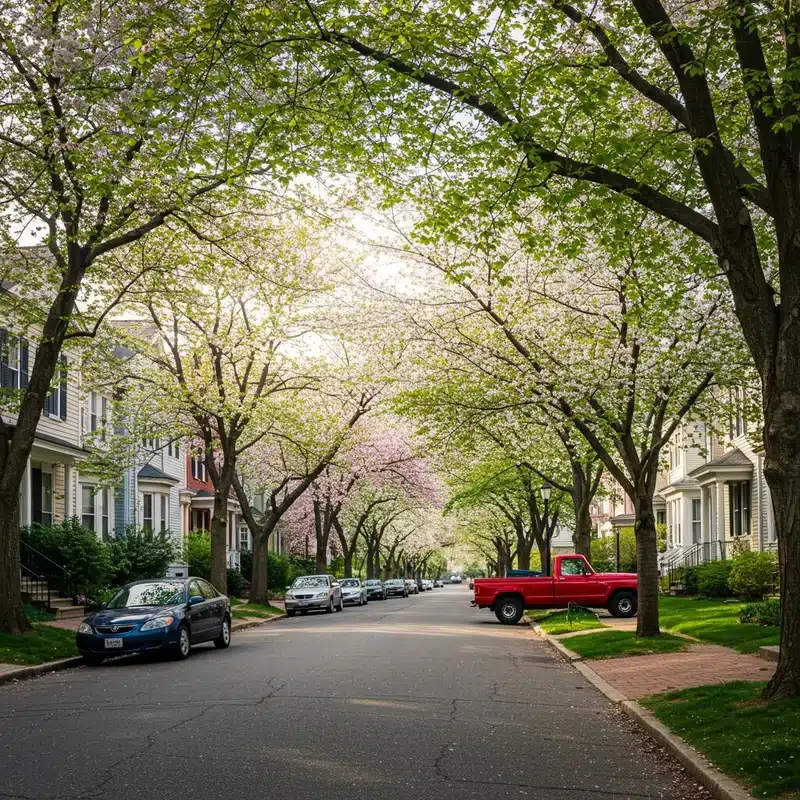
Effective cicada vs locust management requires understanding seasonal timing in our Mid-Atlantic region:
April-May: Monitor soil temperatures for potential cicada emergences. When 8-inch depth reaches 64°F consistently, periodical broods may surface. Begin netting preparation for vulnerable trees.
June: Peak cicada song and egg-laying occurs. Scout for and prune flagged twigs by late June or early July. Grasshopper eggs are also hatching during this period.
July-August: Annual cicadas become audible while grasshopper nymphs mature. This creates the highest feeding pressure on garden edges and agricultural borders.
September-October: Adult grasshoppers continue feeding until first hard frost. They’re laying eggs in bare soil, which creates next year’s population potential.
This seasonal approach helps property owners anticipate and prepare for both types of insects rather than reacting after problems develop.
Most cicada vs locust situations can be managed with good cultural practices and timing. However, certain scenarios benefit from professional assessment and treatment.
For cicadas, professional help makes sense when you have valuable young plantings during emergence years, commercial landscapes with vulnerable installations, or vineyards where flagging could impact production.
Grasshopper issues warrant professional intervention when populations exceed manageable levels, especially around large gardens, agricultural edges, or properties adjacent to outbreak source areas. Early intervention during the nymphal stage provides much better results than waiting until adults are fully developed.
Our family business has been helping Virginia and Maryland property owners navigate these challenges for over 50 years. We understand the local conditions that create both cicada vs locust issues and have developed treatment strategies that protect your property while respecting the environment.
If you’re dealing with either cicadas or grasshoppers around your property, give us a call at 703-683-2000 or email us at info@bettertermite.com. We’ll help you determine the best approach for your specific situation and provide the targeted treatment needed to protect your landscape investment.
Don’t let pest confusion damage your property. Get expert identification and targeted treatment plans from Virginia’s most trusted pest control family.
Cicadas produce a continuous, loud buzzing that can reach 90-100 decibels during peak activity, typically heard during hot midday hours. Grasshoppers (locusts) make quieter chirping or clicking sounds, usually around 50-70 decibels, and are more active at dawn and dusk.
No, cicadas cause minimal feeding damage since they only sip tree sap. Their main impact is “flagging” from egg-laying in small twigs. Grasshoppers (locusts) are the real plant destroyers, using chewing mouthparts to defoliate vegetables, crops, and garden plants.
Brood XIV is due in southwestern Virginia in 2025, while the massive Brood X that emerged in 2021 won’t return until 2038. Different broods emerge in different counties, so timing varies by location within Virginia and Maryland.
Generally no – cicada numbers are too massive for effective chemical control, and adults only live 4-6 weeks anyway. Protecting young trees with mesh netting is much more effective. Spraying can also harm beneficial insects unnecessarily.
Grasshoppers are attracted to tall weeds, unmaintained grass areas, and gardens near field edges. Warm, dry spring weather creates ideal conditions for population booms. Reducing weedy areas and maintaining your lawn helps minimize attraction.
Yes, covering young trees with ¼ to ⅜-inch mesh netting from first emergence until late June effectively prevents egg-laying damage. Secure the netting around the trunk base and remove it after adult cicadas die off.
Early European settlers mistook massive periodical cicada emergences for Old World migratory locusts and coined the term “17-year locust.” The name stuck even though cicadas and locusts are completely different types of insects.
Early treatment of grasshopper nymphs in late May through June provides the best results, before they develop full wings and become more mobile. Border treatments around gardens and field edges are often more effective than broadcast spraying.

With five years of hands-on experience in the pest control industry, George Schulz is a registered technician with the Virginia Pest Management Association and a proud third-generation professional in a family business that’s been protecting homes for over 57 years. He manages and trains a team of service pros while also leading internal research efforts—recently spearheading a deep-dive review of thousands of documents on pest control materials to hand-pick the most kid and pet friendly, most effective solutions tailored specifically for homes in the DC metro area. Read his bio.

